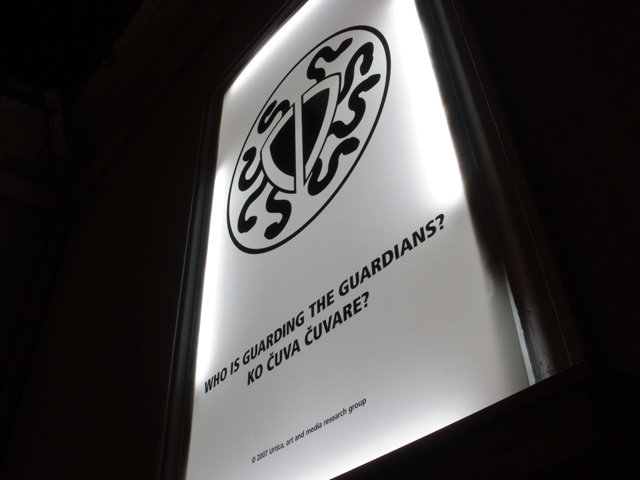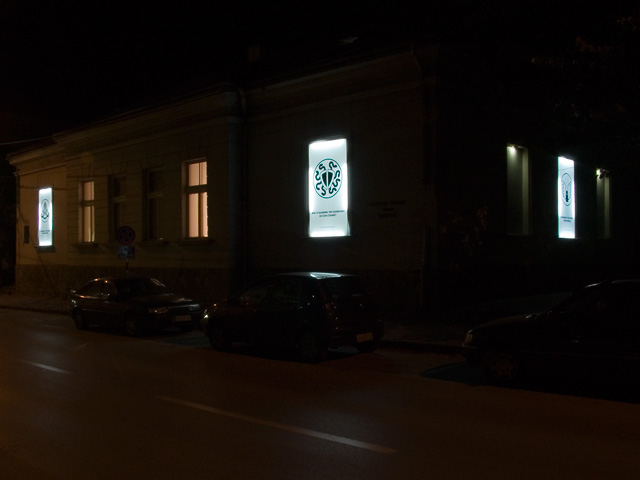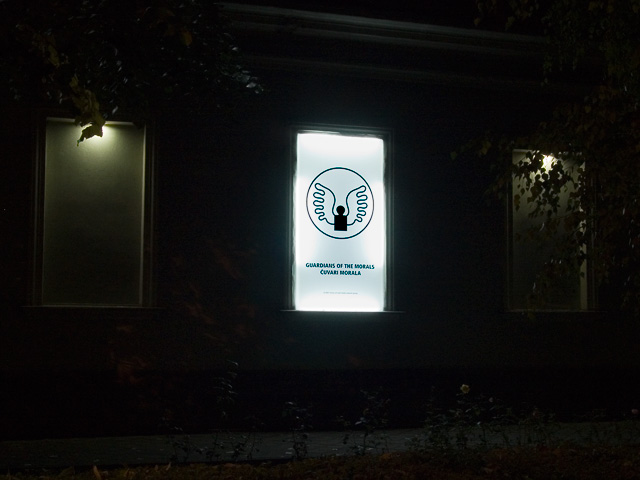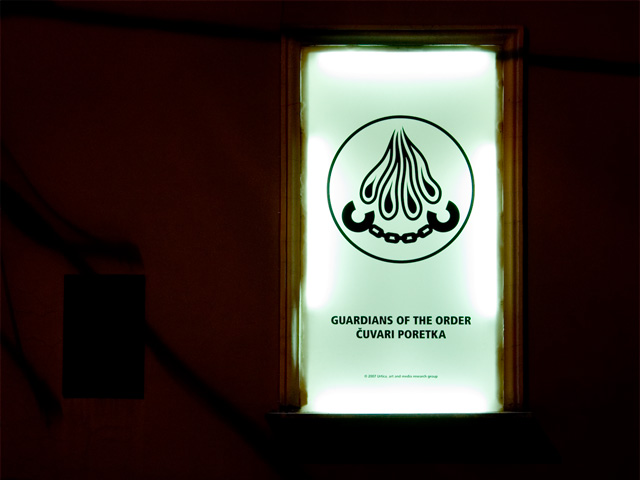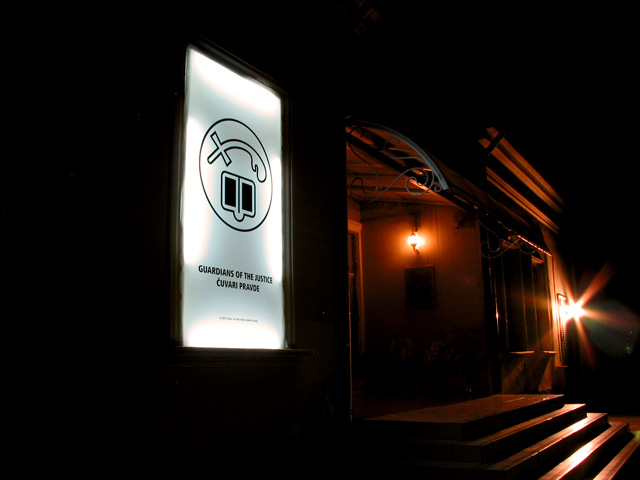
|
Who is Guarding The Guardians?Light-boxes on the gallery’s façade
|
- Photo doc
-
Art and Society
The coat of arms that guard against guardians
-
Keywords / Tags
- Coat of arms,
- Representation,
- Social system,
- Control,
- Power,
- Order,
- Site-specific,
- Guardian,
- Society
Art-Bio:
Premiere
- 2007
- 24th Nadežda Petrović Memorial Čačak “Transforming Memory. The politics of images,” Serbia. Curators: Astrid Wege and Miodrag Krkobabić
The intervention indicated the nearby public institutions, which are entrusted with power as the guardians of the social system.
Urtica’s statement:
Site-specific installation implied creation of a new set of symbolic representations referring to the specific surroundings of Nadežda Petrović Gallery: the police, the court, the church and the National Museum. Starting from Juvenal’s rhetorical question: “But who shall guard the guardians?”*1 The human society is differentiated into communicative subsystems (politics, law, economy, religion, culture, etc.) which cannot control operations of other systems without being controlled themselves. The issues of control and interdependence are the key elements of Urtica’s intervention. The light-boxes on the gallery’s facade displayed symbols designed in a form of guardians’ coat of arms whose ironic reflection rise awareness and act as a talismans that guard against guardians.
*1 “Sed quis custodiet ipsos custodes?” Juvenal — Decimus Iunius Iuvenalis, Roman satiric poet of the late 1st and early 2nd century CE

 People of Europe, Guard Your Precious Values
People of Europe, Guard Your Precious Values The Art in Liquidation
The Art in Liquidation Art and Crisis - Facing Bureaucrat (video)
Art and Crisis - Facing Bureaucrat (video) VQ Bourse - The Value is Here
VQ Bourse - The Value is Here VQ - Art of Fortune and Economy of Risk
VQ - Art of Fortune and Economy of Risk VQ - Golden Card
VQ - Golden Card That Which Changes
That Which Changes Who is Guarding the Guardians?
Who is Guarding the Guardians? Social Engine
Social Engine Dictionary of Primal Behaviour
Dictionary of Primal Behaviour Lapsus Memoriae
Lapsus Memoriae Kumova Sekira
Kumova Sekira Omnigenus
Omnigenus Urtica Medicamentum Est
Urtica Medicamentum Est Social Engine - The Hybrid Source Book
Social Engine - The Hybrid Source Book